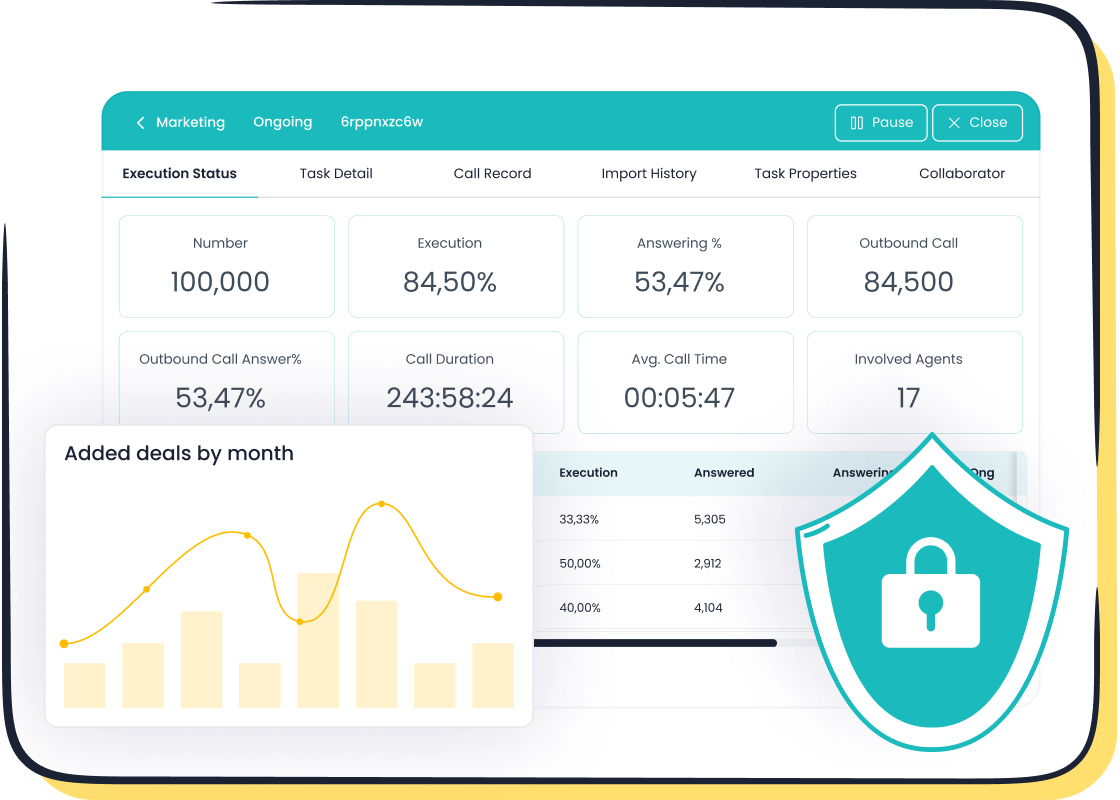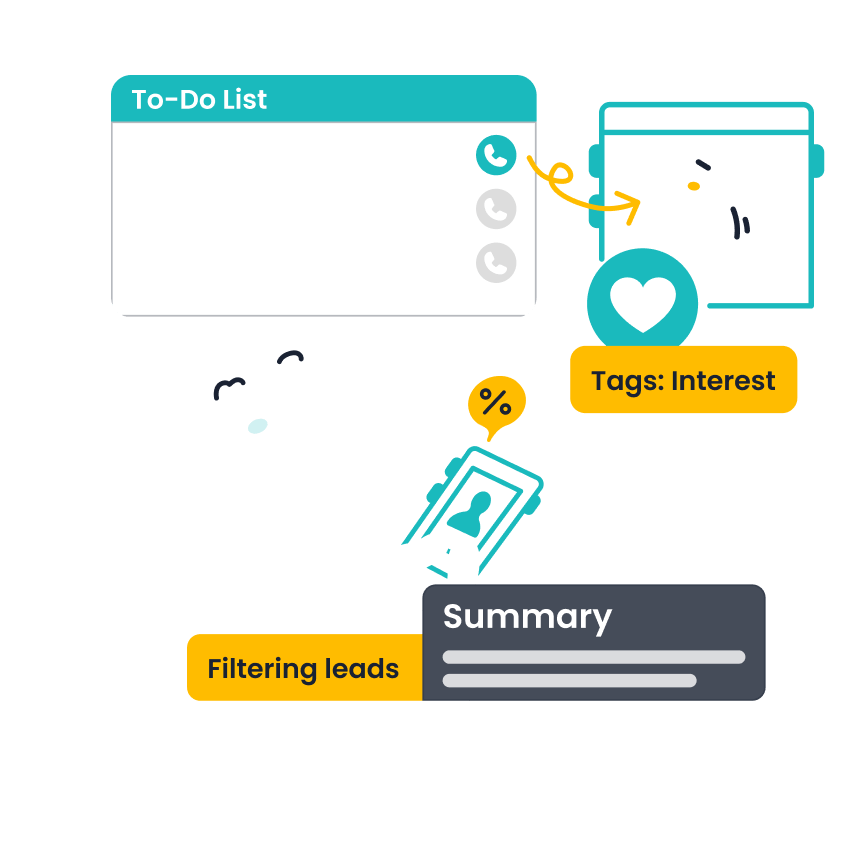What Businesses Should Know About Virtual Sales Assistants

Imagine having a reliable partner that handles repetitive tasks, qualifies leads, and even engages customers—all without taking a coffee break. That’s what a virtual sales assistant does. It’s a smart tool, often powered by AI, that supports your sales team by automating processes and improving efficiency. Businesses across industries, from retail to financial services, are embracing this technology. For instance, platforms like Sobot’s virtual assistant for sales can streamline outbound calls and enhance customer interactions. With the rise of such tools, sales operations are becoming faster, smarter, and more customer-focused.
What Is a Virtual Sales Assistant?

Definition and Key Features
A virtual sales assistant is like having a personal sales helper that never sleeps. It’s a digital tool, often powered by artificial intelligence (AI), designed to support your sales team by automating repetitive tasks and improving efficiency. Think of it as a multitasking genius that handles lead qualification, customer follow-ups, and even sales analytics—all while freeing up your team to focus on closing deals.
Here are some key features that make a virtual sales assistant indispensable:
- Lead Management: It identifies, qualifies, and nurtures leads, ensuring your team focuses on high-potential prospects.
- Personalized Interactions: With AI, it tailors conversations to match customer preferences, boosting engagement.
- Sales Analytics: It provides actionable insights by analyzing data, helping you refine your strategies.
- 24/7 Availability: Unlike humans, it works round the clock, ensuring no opportunity is missed.
To give you an idea of its impact, here’s a quick look at some stats:
| Metric | Value | Description |
|---|---|---|
| AI Tool Utilization | 76% adoption among revenue organizations | Indicates widespread use in sales processes. |
| Lead-to-sale conversion increase | 50% increase | Directly shows improved sales efficiency. |
| Revenue growth among AI-utilizing teams | 83% of teams | Correlates AI use with revenue upswing. |
| Consumer preference for personalized sales | 76% of consumers | Highlights importance of customer satisfaction. |
| Customer satisfaction growth | 88% reported growth | Reflects improved customer relations. |

How Virtual Sales Assistants Operate

Virtual sales assistants work by combining AI, machine learning, and automation to handle sales tasks efficiently. They integrate seamlessly with your existing tools, like CRM systems, to streamline workflows. For example, Sobot’s Voice for Sales connects with platforms like Salesforce and HubSpot in under 30 minutes, making it easy to get started.
Here’s how they typically operate:
- Data Collection: They gather customer data from various sources, such as emails, social media, and website interactions.
- Task Automation: They automate repetitive tasks like sending follow-up emails or scheduling calls.
- Real-Time Insights: They analyze sales data to provide actionable insights, helping you make informed decisions.
- Customer Engagement: They interact with customers through chat, email, or voice, offering personalized solutions.
By taking over these tasks, virtual sales assistants free up your team to focus on building relationships and closing deals. This efficiency is why 76% of revenue-generating organizations now use AI tools in their sales processes.
AI-Powered vs. Human Virtual Sales Assistants
When it comes to virtual sales assistants, you’ll find two main types: AI-powered and human-assisted. Each has its strengths, and the right choice depends on your business needs.
- AI-Powered Assistants: These excel at speed and scalability. They handle repetitive tasks like data entry, lead qualification, and analytics with unmatched efficiency. For instance, AI assistants can complete 57% more tasks than human teams, making them ideal for high-volume operations.
- Human Virtual Assistants: Humans bring emotional intelligence and nuanced decision-making to the table. They’re better suited for tasks requiring empathy, such as resolving complex customer issues.
| Group Type | Tasks Completed | Productivity Increase |
|---|---|---|
| AI Assistant Group | 57% more tasks | Higher satisfaction |
| Human Alone Group | Fewer tasks | Lower satisfaction |
In many cases, a hybrid approach works best. For example, Sobot’s AI solutions combine the efficiency of AI with human oversight, ensuring you get the best of both worlds. This balance allows businesses to scale operations while maintaining a personal touch.
Why Are Virtual Sales Assistants Important for Businesses?
Enhancing Sales Efficiency
Imagine your sales team spending less time on repetitive tasks and more time closing deals. That’s the magic of a virtual sales assistant. These tools streamline workflows, automate lead qualification, and provide actionable insights—all of which save time and boost efficiency. Businesses using virtual assistants for sales have reported remarkable improvements in productivity.
| Improvement Type | Percentage Increase |
|---|---|
| Conversion Rates | 40% |
| Increase in Qualified Leads | 68% |
| Increased Sales Rep Productivity | 36% |

With such gains, it’s clear why virtual sales assistants are becoming indispensable. For example, Sobot’s Voice for Sales integrates with CRM systems like Salesforce and HubSpot, enabling your team to focus on high-value tasks. This kind of efficiency doesn’t just improve your bottom line—it transforms how your team works.
Reducing Operational Costs
Running a sales operation can be expensive, especially when payroll and administrative costs pile up. Virtual sales assistants offer a cost-efficient alternative. By automating tasks and reducing the need for additional staff, they help businesses cut expenses significantly.
| Statistic | Description |
|---|---|
| 70%-80% discount | Small businesses can save significantly on payroll by hiring virtual assistants from developing nations. |
| 78% savings | Virtual assistants can lead to annual operating cost reductions of up to 78%. |
These savings aren’t just for small businesses. Enterprises across industries are leveraging virtual assistants to reduce costs while maintaining high-quality customer interactions. Sobot’s solutions, like its AI-powered Voice for Sales, offer scalability and reliability, ensuring you get maximum value for your investment.
Improving Customer Engagement and Retention
Keeping customers engaged is key to driving sales and building loyalty. Virtual sales assistants excel at personalized interactions, which improve customer engagement and retention. They analyze data to understand preferences, recommend products, and even follow up with tailored messages.
| Source | Statistic | Description |
|---|---|---|
| Amazon | 35% | Revenue attributed to recommendation system improving customer preferences. |
| Aberdeen Group | 89% vs 33% | Retention rates for companies with strong vs weak omnichannel strategies. |
| Lemonade | 30% | Increase in policy completion rates due to AI assistant engagement. |
| General Research | 90% more frequently, 60% more per transaction | Engaged customers' buying behavior compared to less engaged customers. |
Sobot’s AI solutions, designed for omnichannel support, ensure seamless interactions across platforms like chat, email, and voice. This approach not only boosts engagement but also builds trust, helping you retain customers for the long haul.
What Tasks Can a Virtual Sales Assistant Handle?
Lead Generation and Qualification
A virtual sales assistant can transform how you handle lead management. It identifies potential customers, qualifies them based on their readiness to buy, and ensures your sales team focuses on high-value prospects. Imagine having a tool that categorizes leads into hot, warm, or cold, saving you hours of manual work.
These assistants excel at tasks like:
- Conducting market research to pinpoint your target audience.
- Managing multi-channel outreach through email, social media, and even cold calling.
- Following up with leads using automated sequences to keep them engaged.
For example, virtual assistants for sales can make up to 600 calls daily using a dialer, compared to just 200 manual calls. This efficiency ensures no opportunity slips through the cracks. Tools like Sobot’s Voice for Sales integrate seamlessly with CRM systems, making lead qualification and follow-ups a breeze.
| Task | Description |
|---|---|
| Cold Calling | Up to 600 calls daily with a dialer. |
| Social Media Prospecting | Engaging with prospects on LinkedIn, Facebook, and Instagram. |
| Lead Qualification and Scoring | Categorizing leads into hot, warm, and cold. |
Customer Relationship Management
Managing customer relationships is another area where virtual sales assistants shine. They keep your CRM database updated, ensuring accurate and organized information. This means you’ll always have a clear view of your sales pipeline.
Here’s what they can do for you:
- Update customer profiles with every interaction.
- Schedule follow-ups and appointments automatically.
- Provide reminders for key milestones, like contract renewals or upsell opportunities.
By automating these sales support tasks, virtual assistants free up your time to focus on building meaningful connections with your customers. For instance, Sobot’s solutions unify customer data across channels, giving you a 360-degree view of each client. This level of organization boosts efficiency and ensures no detail gets overlooked.
Sales Analytics and Reporting
Virtual sales assistants don’t just handle tasks—they also provide insights. They analyze customer data, monitor trends, and generate reports that help you make smarter decisions.
Here’s how they support your sales strategy:
- Conduct market research to identify industry trends and competitor activities.
- Analyze customer demographics to tailor your sales approach.
- Create detailed reports that highlight performance metrics and opportunities for improvement.
For example, assistants can forecast sales trends based on past data, helping you allocate resources effectively. Sobot’s AI-driven analytics take this a step further by offering real-time insights, ensuring your team stays ahead of the curve. With these tools, you’ll not only understand your market better but also position your business for long-term success.
Marketing and Outreach Support
Marketing and outreach can feel overwhelming, especially when you're juggling multiple campaigns and channels. A virtual sales assistant can simplify this process by automating repetitive tasks and helping you connect with your audience more effectively. Imagine having a tool that schedules emails, tracks campaign performance, and even personalizes messages for your prospects. That’s the kind of support these assistants offer.
Here’s how they can help with marketing and outreach:
- Email Campaigns: They can send personalized emails to your leads, ensuring your message resonates with each recipient.
- Social Media Engagement: They monitor platforms like LinkedIn or Instagram, engaging with potential customers and responding to inquiries.
- Follow-Up Automation: They ensure no lead gets forgotten by sending timely follow-ups.
For example, Sobot’s Voice for Sales integrates seamlessly with CRM systems like Salesforce and HubSpot. This integration allows you to manage outreach campaigns and track results in real time. You can even use its AI-driven insights to identify which strategies are working and where you need to adjust. Businesses using tools like this often see a 30% increase in customer engagement, which directly impacts sales.
Did you know that 76% of consumers expect personalized communication from brands? A virtual assistant for sales ensures you meet this expectation by tailoring messages based on customer preferences. This level of personalization not only boosts engagement but also builds trust, making your outreach efforts more effective.
With a virtual sales assistant, you can focus on crafting creative strategies while the assistant handles the execution. It’s like having an extra team member who never takes a break!
Benefits of a Virtual Sales Assistant for Businesses

Time Savings and Scalability
Time is one of your most valuable resources, and a virtual sales assistant helps you reclaim it. By automating repetitive tasks like lead qualification, follow-ups, and data entry, these assistants free up your team to focus on what they do best—closing deals and building relationships. Imagine having a tool that works tirelessly around the clock, ensuring no opportunity slips through the cracks.
Virtual sales assistants also shine when it comes to scalability. Whether your business is experiencing a seasonal surge or expanding into new markets, these tools adapt effortlessly. They provide on-demand support, allowing you to scale your operations without the hassle of hiring and training additional staff.
Take a look at how businesses benefit from this scalability:
| Evidence Type | Details |
|---|---|
| Sustainable Cost Savings | Law firms save an average of $50,000 per year per assistant by hiring virtual legal assistants. |
| Scalability and Flexibility | Virtual assistants provide on-demand support, allowing firms to adjust staffing based on workload. |
| Enhanced Productivity and Focus | Firms using virtual assistants see a 20% increase in overall efficiency. |
| Reduced Attorney Burnout | Offloading routine tasks leads to better work-life balance and higher job satisfaction. |
| Competitive Advantage | Firms using virtual assistants outperform competitors by 15% in client satisfaction ratings. |

Sobot’s Voice for Sales is a perfect example of how you can scale your sales efforts. With features like automated dialing and real-time call monitoring, it ensures your team can handle increased workloads without missing a beat. This kind of flexibility not only saves time but also enhances the customer experience by ensuring consistent, high-quality interactions.
Cost Efficiency and ROI
Running a sales team can be expensive, but a virtual sales assistant offers a cost-effective alternative. By automating tasks and reducing the need for additional hires, you can significantly cut operational costs. For instance, businesses that switch to virtual assistants save on expenses like salaries, benefits, and training.
Here’s a breakdown of the potential savings:
| Cost Type | In-House Employee Cost | Virtual Assistant Cost | Savings |
|---|---|---|---|
| Hiring Costs | $4,000 | N/A | $4,000 |
| Base Salary | $66,051 | N/A | $66,051 |
| Benefits (20%) | $13,210 | N/A | $13,210 |
| Total Cost | $83,261 | $1,500/month | $81,761/month |
| Time Saved (per year) | 300 hours | N/A | N/A |
| Potential Revenue Generation | N/A | $11,000 | N/A |
"The time I am saving on not deleting emails alone is saving the district thousands of dollars." – Rob Lukens
Sobot’s Voice for Sales takes cost efficiency to the next level. Its seamless integration with CRM systems like Salesforce and HubSpot eliminates the need for multiple platforms, reducing software expenses. Plus, its AI-driven insights help you gain actionable insights, enabling smarter decisions that maximize your ROI.
Enhanced Lead Conversion Rates
Converting leads into customers is the ultimate goal of any sales team, and a virtual sales assistant can help you maximize lead conversion. These tools use AI to analyze customer behavior, identify high-quality leads, and engage them with personalized interactions. The result? Higher conversion rates and more revenue for your business.
Here’s what the numbers say:
| Statistic Description | Value |
|---|---|
| Chatbots Can Achieve Up to 70% Conversion Rates | 70% |
| Businesses Using Chatbots Experience a 67% Increase in Sales | 67% increase |
| 55% of Businesses Using Chatbots See an Increase in High-Quality Leads | 55% increase |

Sobot’s Voice for Sales is designed to enhance the customer experience and drive conversions. Its AI-powered features, like keyword spotting and real-time call monitoring, ensure your team can respond to customer needs instantly. This level of responsiveness not only builds trust but also encourages customers to take the next step in their buying journey.
By leveraging tools like Sobot’s Voice for Sales, you can turn more leads into loyal customers while delivering a seamless, personalized experience.
24/7 Availability for Customer Support
Imagine a customer visiting your website late at night, ready to make a purchase but needing help with a question. If no one is available to assist, they might leave—and never come back. This is where 24/7 availability becomes a game-changer. A virtual sales assistant ensures your business is always ready to respond, no matter the time or day.
Why does this matter so much? Because customers expect immediate answers. Studies show that 90% of people consider an instant response crucial when they have a service question. Whether it’s resolving an issue or answering a product inquiry, being available around the clock builds trust and keeps customers engaged. AI-powered assistants excel at this. They retrieve information from enterprise systems, log issues, and reduce the effort customers need to get support. This seamless experience not only satisfies customers but also encourages them to complete their purchases.
Businesses also benefit from 24/7 support during peak times or unexpected surges in inquiries. For example, AI virtual assistants can handle high volumes of questions during holiday sales or product launches. They prevent abandoned carts by addressing concerns instantly, ensuring no opportunity slips away. In fact, 36% of customer service representatives believe that round-the-clock availability is the biggest advantage of AI chatbots.
The impact of 24/7 support goes beyond just answering questions. American Express reported a 35% improvement in customer satisfaction after implementing AI-driven, always-on support. This shows how being available at all times can directly enhance customer loyalty and satisfaction.

Sobot’s solutions, like its Voice for Sales platform, are designed to provide this level of support. With features like real-time call monitoring and AI-driven insights, Sobot ensures your business can engage with customers anytime, anywhere. Whether it’s through voice, email, or chat, Sobot’s tools help you deliver a consistent and reliable experience across all channels.
In today’s fast-paced world, customers don’t wait. They expect businesses to be as responsive as their needs. By adopting a virtual sales assistant, you can meet these expectations effortlessly, keeping your customers happy and your business thriving.
How to Choose the Right Virtual Sales Assistant for Your Business
Assessing Business Needs and Goals
Before diving into the world of virtual sales assistants, it’s essential to understand your business needs. Start by identifying your overarching goals. Are you looking to boost lead generation, improve customer engagement, or streamline sales processes? Defining these objectives will help you pinpoint the features you need.
Here’s a simple approach to get started:
- Think about the tasks you want to automate.
- Evaluate the skills and experience required to meet your goals.
- Set SMART objectives—specific, measurable, achievable, relevant, and time-bound.
For example, if your goal is to increase lead conversion rates by 20% in six months, you’ll need an assistant with strong lead qualification capabilities. Virtual assistants also offer flexibility, making them ideal for experimental projects before committing to full-time hires.
Evaluating Features and Integrations
Not all virtual sales assistants are created equal. To find the right fit, you’ll need to evaluate their features and how well they integrate with your existing tools.
| Feature/Integration | Description |
|---|---|
| Lead generation | Generates leads across websites and social media. |
| Lead qualification | Categorizes leads based on specific requirements. |
| Automated customer engagement | Sends reminders and notifications to keep customers engaged. |
| Personalization capabilities | Offers tailored recommendations and personalized interactions. |
| Post-purchase communication | Manages updates and answers queries after a sale. |
| Automatic appointment booking | Schedules meetings with clients and prospects automatically. |
| Integrations with various platforms | Works seamlessly with CRM systems, e-commerce platforms, and payment solutions. |
For instance, Sobot’s Voice for Sales integrates with CRM systems like Salesforce and HubSpot, ensuring smooth workflows and real-time insights. This kind of compatibility can save you hours of manual work and improve efficiency.
Reviewing Testimonials and Case Studies
Customer feedback is a goldmine when choosing a virtual sales assistant. Look for testimonials and case studies that highlight real-world results. For example, Weee!, an online Asian supermarket, used Sobot’s voice solutions to improve agent efficiency by 20% and reduce resolution time by 50%. These numbers show how the right assistant can transform your operations.
When reviewing testimonials, focus on businesses similar to yours. This ensures the assistant has a proven track record in your industry. Don’t forget to check for metrics like ROI, customer satisfaction, and scalability.
Comparing Costs and Long-Term Value
When you’re considering a virtual sales assistant, it’s natural to wonder if the investment is worth it. The good news? These tools often pay for themselves in no time. Let’s break it down.
First, think about the costs you’re already managing. Hiring, training, and retaining a sales team can be expensive. According to Glassdoor, the average cost to hire a new employee in the U.S. is over $4,000. Add salaries, benefits, and ongoing training, and the numbers climb quickly. A virtual sales assistant eliminates many of these expenses by automating repetitive tasks and reducing the need for additional hires.
Now, let’s talk about long-term value. Businesses using virtual assistants often see a significant return on investment (ROI). For example, companies that adopt AI-driven tools report a 67% increase in sales and a 55% boost in high-quality leads. These tools don’t just save money—they actively generate revenue by improving efficiency and conversion rates.
Take Sobot’s Voice for Sales as an example. It integrates seamlessly with CRM systems like Salesforce and HubSpot, cutting down on software costs. Its AI-driven insights help you make smarter decisions, ensuring you get the most out of every dollar spent. Plus, with features like automated dialing and real-time call monitoring, your team can handle more leads without additional resources.
In the long run, a virtual sales assistant isn’t just a cost-saving tool—it’s a growth engine. By reducing overhead and boosting productivity, it helps your business scale efficiently. And with 24/7 availability, you’ll never miss an opportunity to connect with a customer.
Pro Tip: When evaluating costs, don’t just look at the price tag. Consider the time, resources, and revenue a virtual sales assistant can save or generate for your business.
Virtual sales assistants are transforming sales operations by automating tasks, personalizing customer interactions, and boosting efficiency. They help you save time, reduce costs, and improve lead conversion rates. Imagine having a tool that schedules appointments, nurtures leads, and provides actionable insights—all while enhancing the customer experience.
Sobot’s Voice for Sales takes this to the next level. With features like AI-driven call monitoring and seamless CRM integration, it’s designed to scale with your business. Ready to supercharge your sales? Explore Sobot’s solutions today and see the difference for yourself!
FAQ
What is the main advantage of using a virtual sales assistant?
Virtual sales assistants save time by automating repetitive tasks like lead qualification and follow-ups. They also improve efficiency and scalability, allowing your team to focus on closing deals. Tools like Sobot’s Voice for Sales can double conversion rates and boost productivity by up to 79%.
Can virtual sales assistants integrate with my existing CRM system?
Yes! Most virtual sales assistants, including Sobot’s Voice for Sales, integrate seamlessly with popular CRM systems like Salesforce and HubSpot. This ensures smooth workflows and real-time insights, helping you manage leads and customer data effortlessly.
How quickly can I deploy a virtual sales assistant?
Deployment is fast. For example, Sobot’s Voice for Sales can integrate with your CRM in under 30 minutes and be fully operational within a week. This quick setup lets you start improving your sales processes almost immediately.
Are virtual sales assistants suitable for small businesses?
Absolutely! Virtual sales assistants reduce costs and improve efficiency, making them ideal for small businesses. They handle tasks like lead generation and customer engagement, allowing you to scale operations without hiring additional staff. Sobot’s solutions are designed to fit businesses of all sizes.
Do virtual sales assistants work 24/7?
Yes, they do! Virtual sales assistants provide round-the-clock support, ensuring no opportunity is missed. Sobot’s AI-powered tools, like Voice for Sales, offer 24/7 availability, helping you engage customers anytime, anywhere.
See Also
Enhancing Efficiency With AI-Driven Customer Support Solutions
Elevate SaaS Customer Support Using Effective Live Chat Tactics
Increasing Sales Through Ecommerce Live Chat Technology
